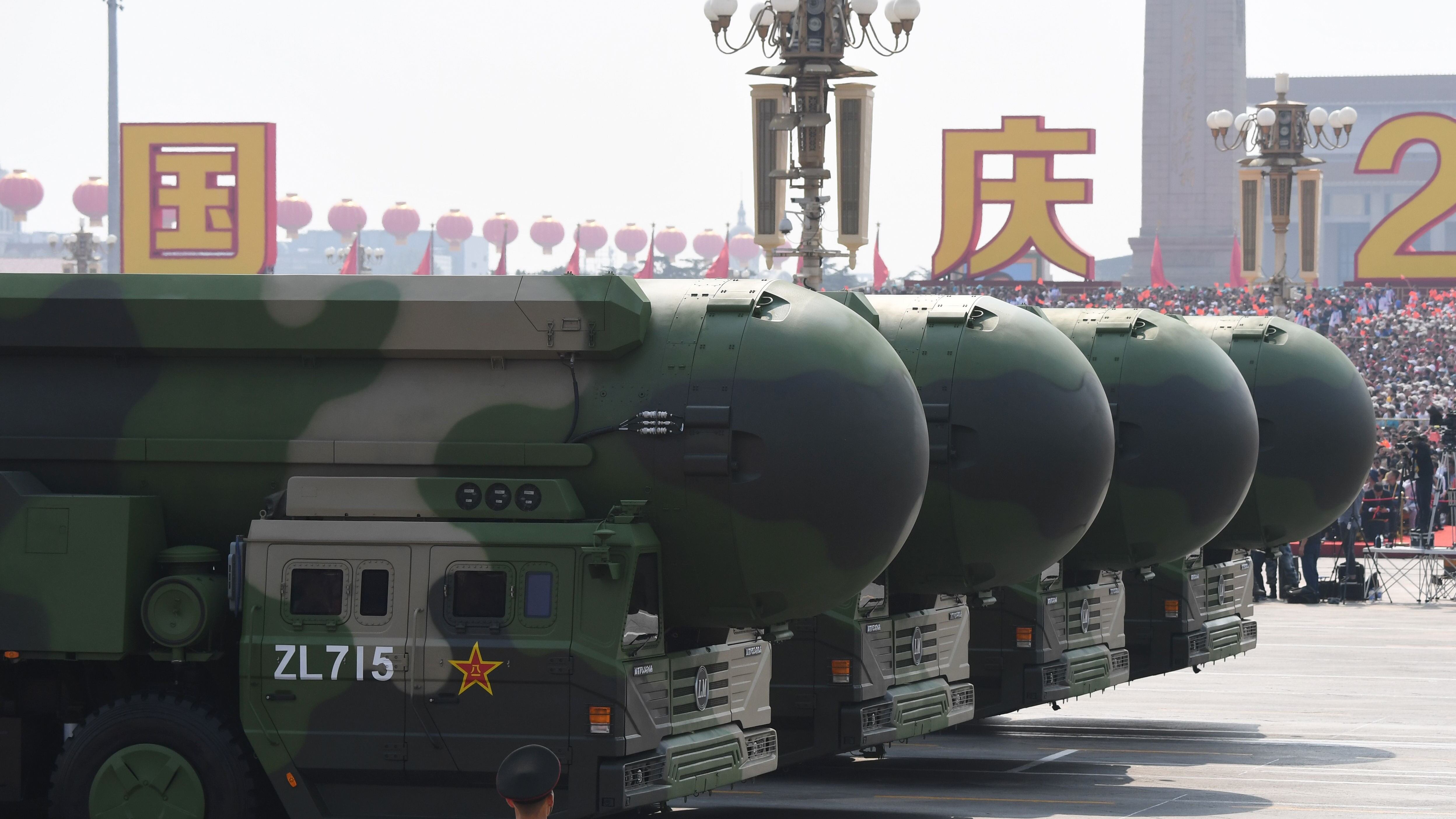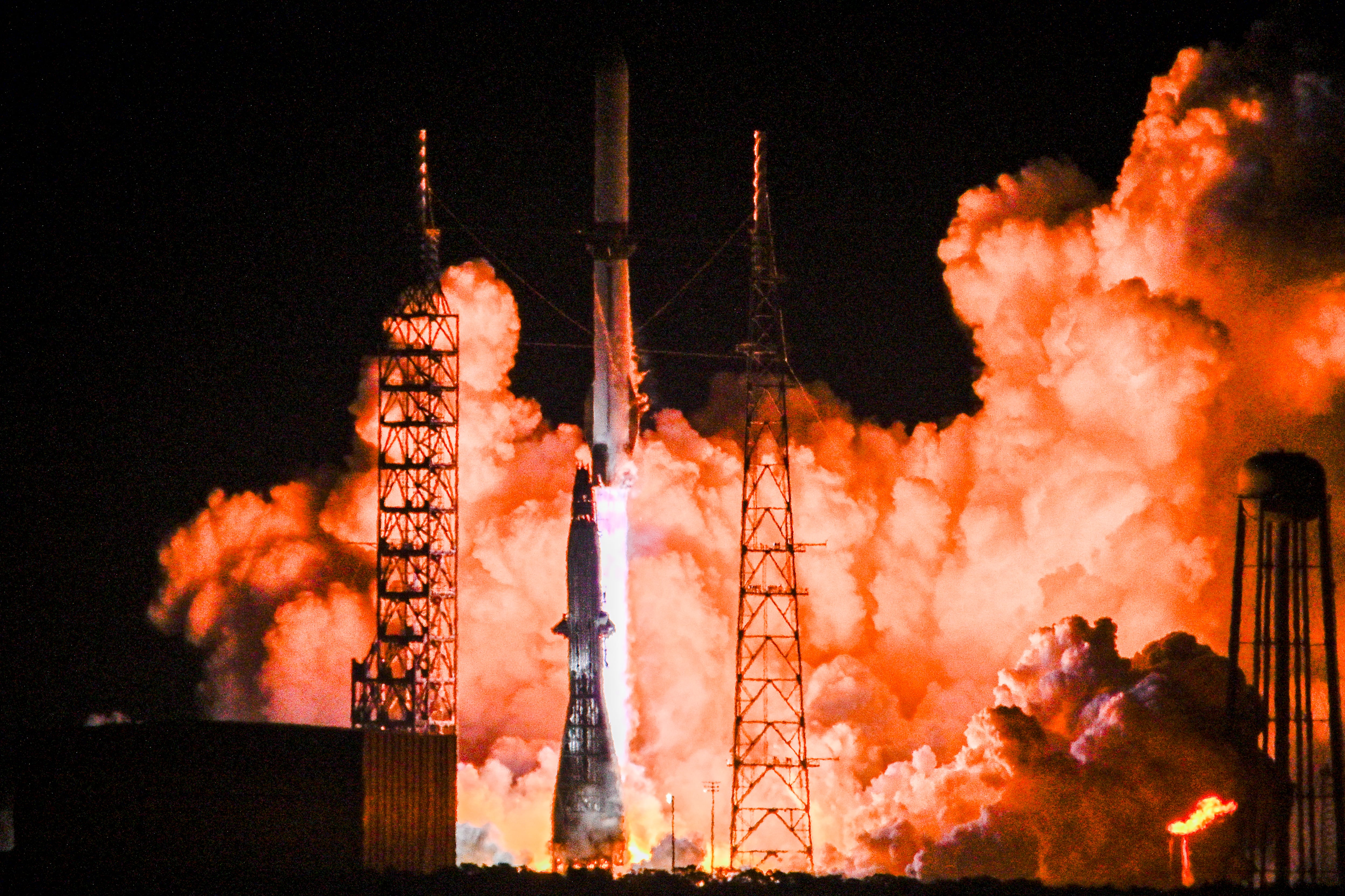WASHINGTON — The U.S. may no longer enjoy a numerical advantage against China in certain elements of its Intercontinental Ballistic Missile program, according to Strategic Command, which oversees the U.S. nuclear arsenal.
STRATCOM recently sent a classified determination to Congress pursuant to a clause in the fiscal 2022 National Defense Authorization Act, which requires congressional notification if China overtakes the U.S. in at least one of three components regarding its ICBM stockpile.
James Inhofe of Oklahoma, the top Republican on the Senate Armed Services Committee, pushed the Pentagon to declassify the determination as required under the law in a letter sent Monday to STRATCOM commander Admiral Charles Richard.
“We’ve only seen the tip of the iceberg when it comes to China’s growing military might,” Inhofe wrote on Twitter, where he publicized the letter. “The [Biden administration] must be open and honest with the American people about the threat Beijing poses to global order and our way of life.”
Mike Rogers of Alabama, the top Republican on the House Armed Services Committee, also signed onto the letter alongside the ranking members of the Strategic Forces panels in both chambers: Sen. Deb Fischer, R-Neb., and Rep. Doug Lamborn, R-Colo.
Under the law, STRATCOM must notify Congress if China deploys more ICBMs or ICBM launchers than the U.S. Data compiled by the Pentagon in its annual China report and a Congressional Research Service document indicate that the U.S. still maintains a numerical advantage versus China in its number of deployed ICBMs and ICBM launchers. This suggests that those two conditions did not trigger the STRATCOM notice.
The third component of the law triggers the notice if China has more nuclear warheads equipped on its ICBMs than the U.S.
Jeffrey Lewis, the director of the East Asia Nonproliferation Project at Middlebury College, told Defense News in an interview that the classified notification likely reveals that China has equipped more nuclear warheads on its ICBMs than the United States. Lewis sits on the State Department’s International Security Advisory Board but does not have access to the classified STRATCOM assessment.
“It must be warheads,” Lewis said. “The China military power report estimates that [Beijing’s] nuclear stockpile has surpassed 400.”
That report found that China will “likely field a stockpile of about 1,500 warheads by its 2035 timeline” if it continues at its current pace of nuclear expansion. The report also found that China has doubled its ICBM stockpile since 2020.
China now has 300 ICBMs and launchers. But that’s still less than the United States, which has 400 ICBMs and 450 ICBM launchers.
Lewis noted that China’s Dongfeng-41 missile can “carry multiple warheads, so 300 missiles could get you slightly over 400 warheads.” Meanwhile, all 400 U.S. Minuteman III missiles currently carry just one warhead per ICBM.
Lawmakers and their staff were unable to confirm to Defense News that the Chinese ratio of warheads to ICBMs triggered the notification given the classified nature of the determination.
“We are unable to provide additional clarity due to classification issues,” a congressional aide said on condition of anonymity to discuss the classified notification.
The aide added that the top Republican lawmakers who wrote to STRATCOM’s Richard “strongly encourage the administration to work through the associated classification issues to provide the statutorily directed unclassified notification and ensure the public is informed as possible regarding China’s expanding nuclear threat.”
Still, Lewis downplayed the fact that Beijing likely has a higher ratio of warheads per ICBM than Washington.
“It doesn’t matter because the U.S. could put multiple warheads on its land-based ICBMs, we just choose not to do that,” he said. “You really have to count the ICBMs and [submarine-launched ballistic missiles] together. And once you do that, our number is much higher than theirs. This is like an accounting gimmick.”
The U.S. had 1,389 warheads on a total of 665 deployed ICBMs, submarine-launched ballistic missiles and heavy bombers as of September 2021, according to the Congressional Research Service.
Henry Sokolski, the executive director of the Nonproliferation Policy Education Center, questioned whether the U.S. could maintain its vast numerical advantage against China’s nuclear arsenal if Beijing continues its current pace of nuclear modernization on top of contending with Russia’s arsenal.
“I don’t know how long it takes for our system to get another 1,500 warheads in place on our missiles,” said Sokolski. “It could take a while and cost an awful lot. If you’re going in that direction, is there any reason to believe the other side is going to just wait while we catch up? I don’t think so.”
Bryant Harris is the Congress reporter for Defense News. He has covered U.S. foreign policy, national security, international affairs and politics in Washington since 2014. He has also written for Foreign Policy, Al-Monitor, Al Jazeera English and IPS News.








